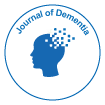Advances in Early Dementia Diagnosis: The Role of Imaging and Genetic Markers
Received Date: Jan 01, 2025 / Published Date: Jan 30, 2025
Abstract
Early detection of dementia is crucial for effective intervention and better patient outcomes. Recent advances in imaging and genetic biomarkers have enhanced the ability to identify dementia at its onset, even before clinical symptoms become apparent. Imaging techniques such as magnetic resonance imaging (MRI), positron emission tomography (PET), and functional MRI (fMRI) have provided critical insights into brain alterations that occur in the early stages of dementia. In parallel, genetic markers such as APOE genotype and mutations in other genes have shown promising potential in identifying individuals at risk. This paper explores the role of these advanced diagnostic tools in the early identification of dementia, focusing on their diagnostic accuracy, benefits, and challenges. The integration of both imaging and genetic biomarkers could significantly improve the diagnostic process, allowing for earlier intervention and personalized treatment strategies. Further research is required to validate these markers in diverse populations.
Citation: Tanaka Y (2025) Advances in Early Dementia Diagnosis: The Role ofImaging and Genetic Markers J Dement 9: 253.
Copyright: © 2025 Tanaka Y. This is an open-access article distributed under theterms of the Creative Commons Attribution License, which permits unrestricteduse, distribution, and reproduction in any medium, provided the original author andsource are credited.
Select your language of interest to view the total content in your interested language
Share This Article
Recommended Journals
Open Access Journals
Article Usage
- Total views: 182
- [From(publication date): 0-0 - Oct 03, 2025]
- Breakdown by view type
- HTML page views: 122
- PDF downloads: 60
